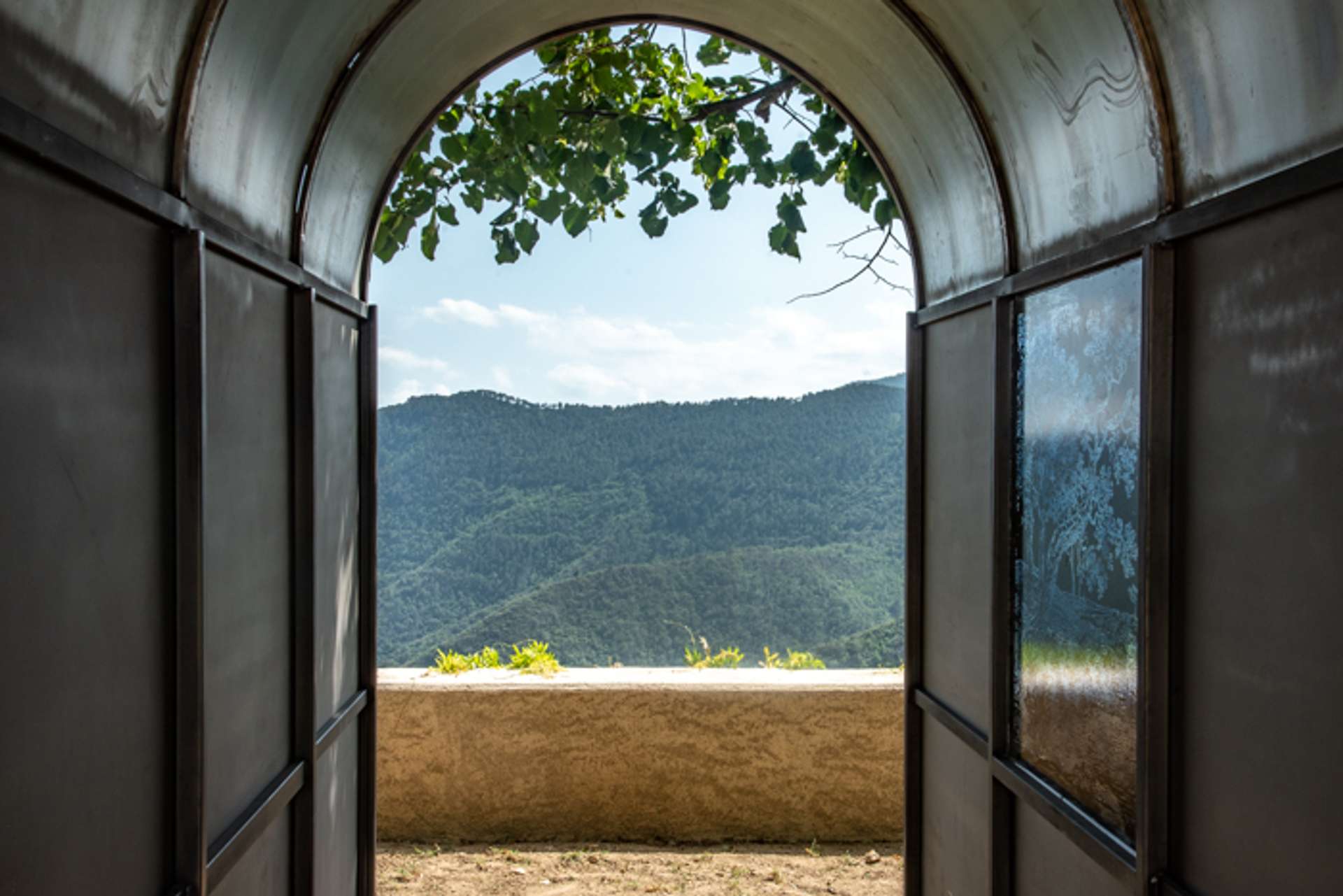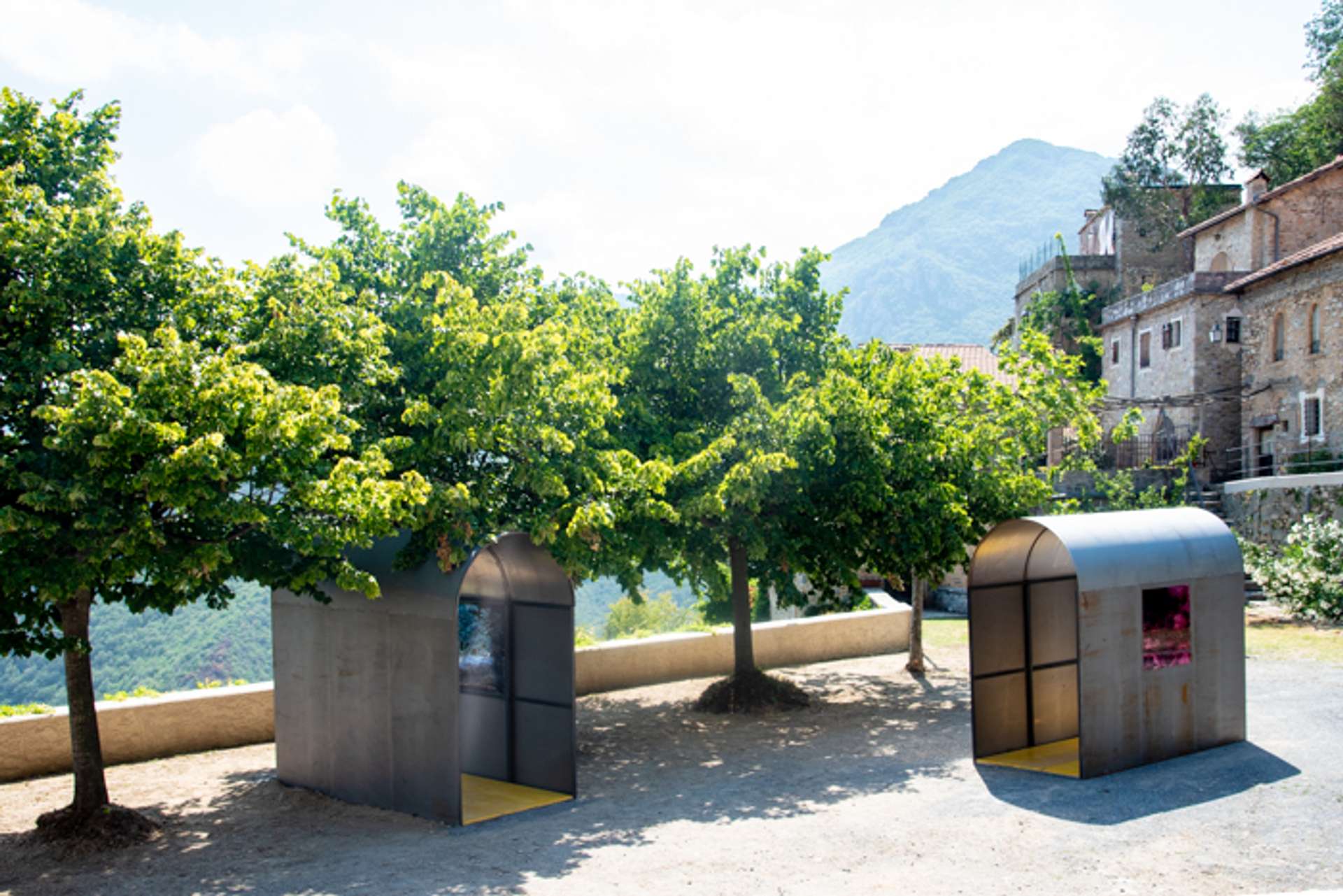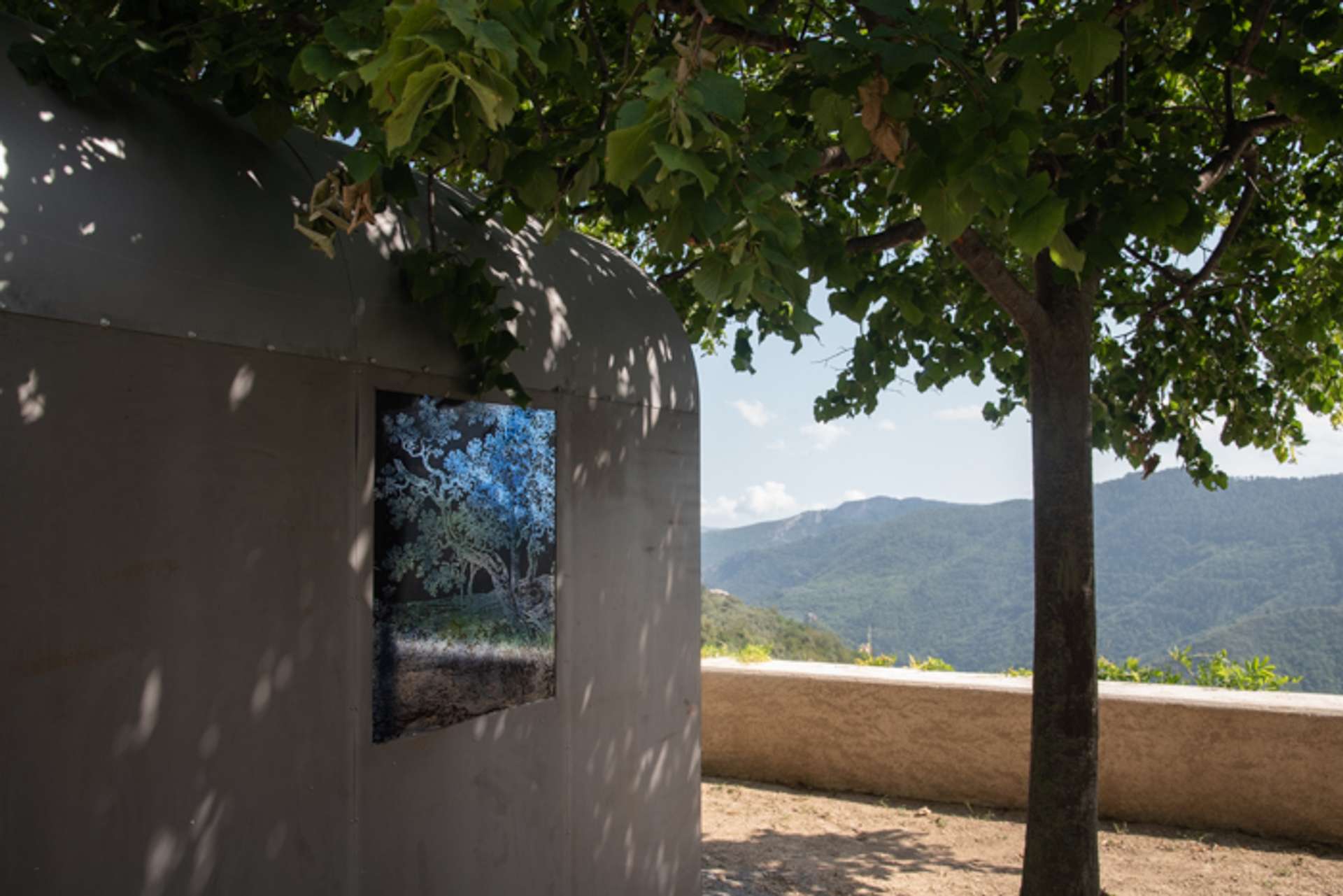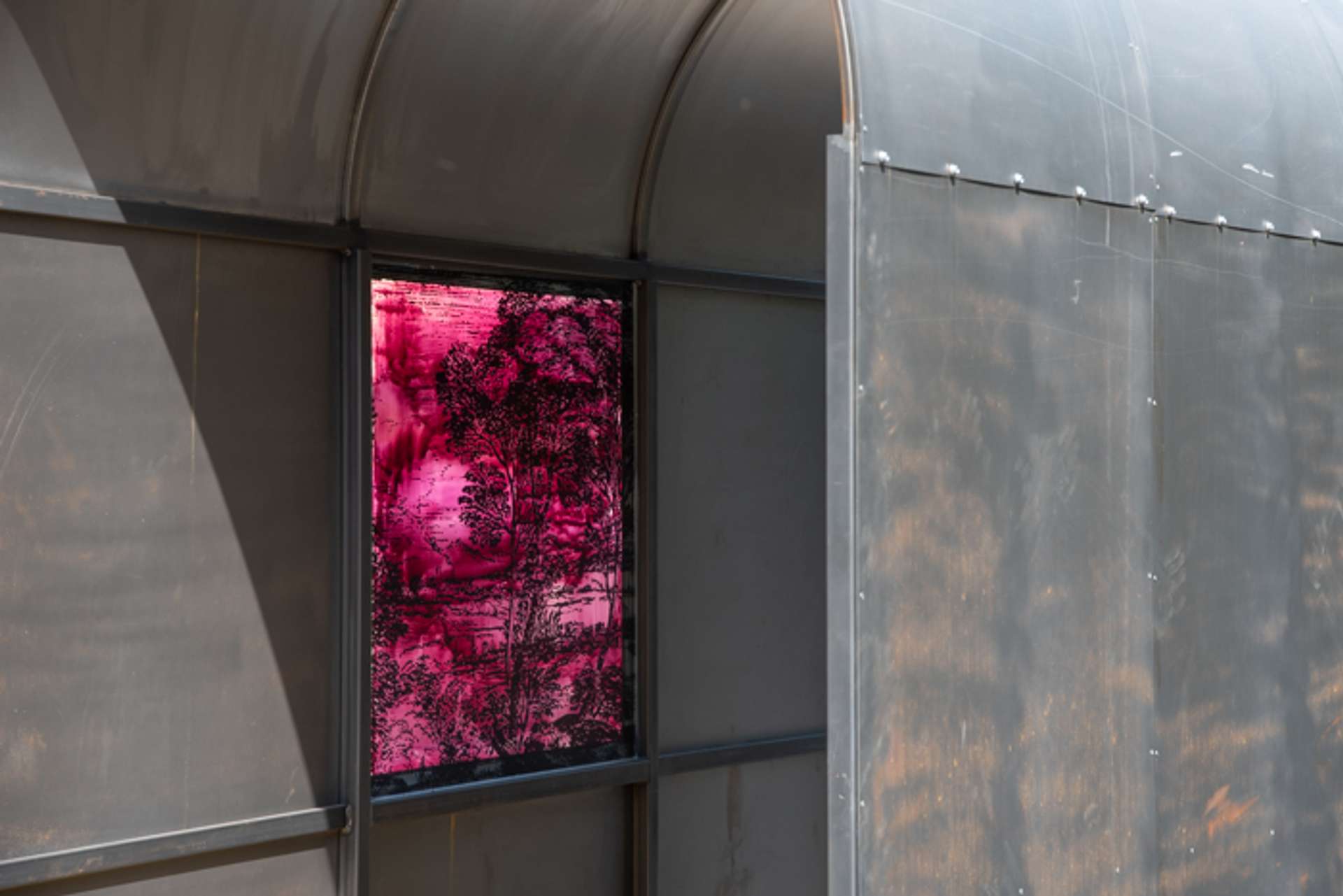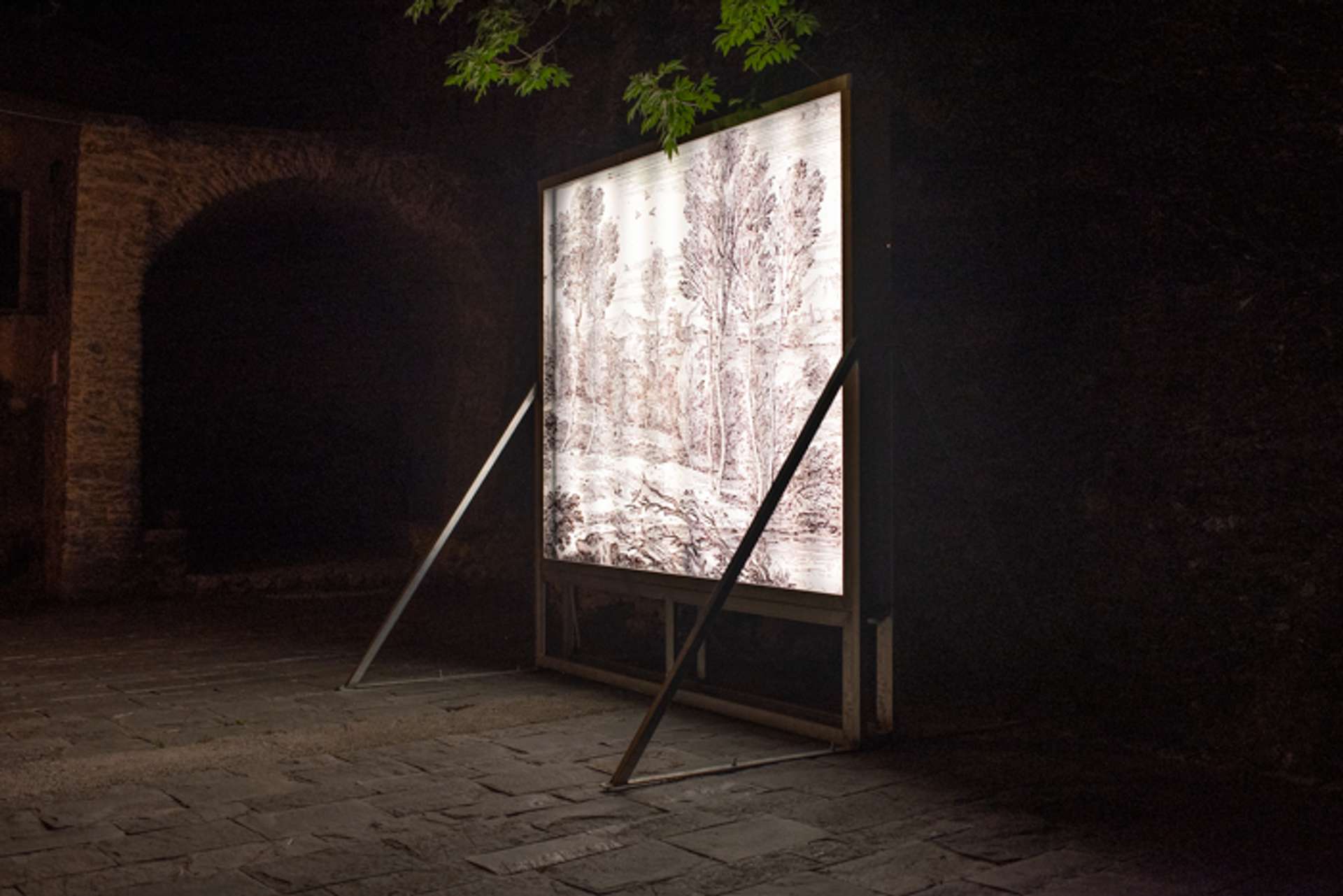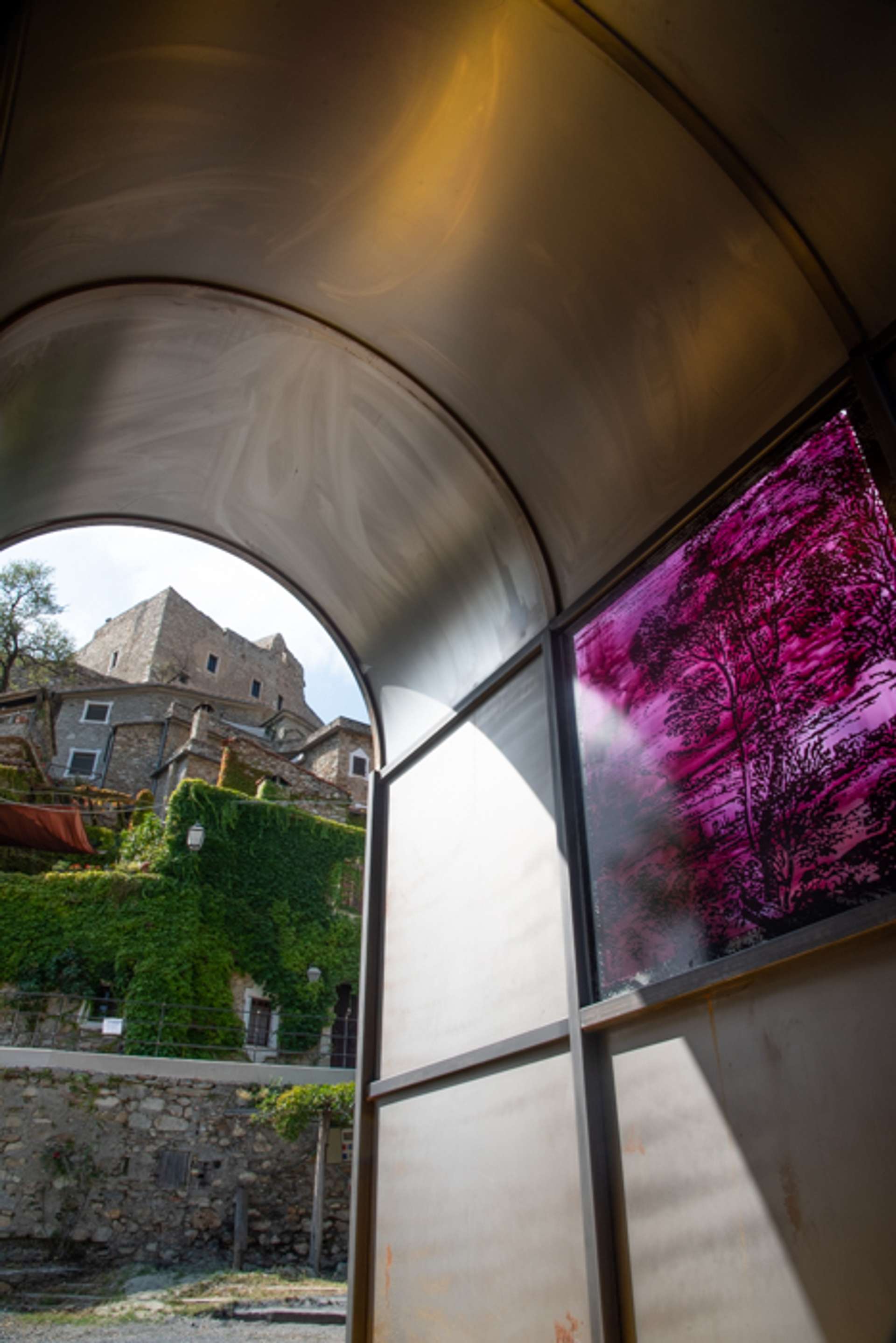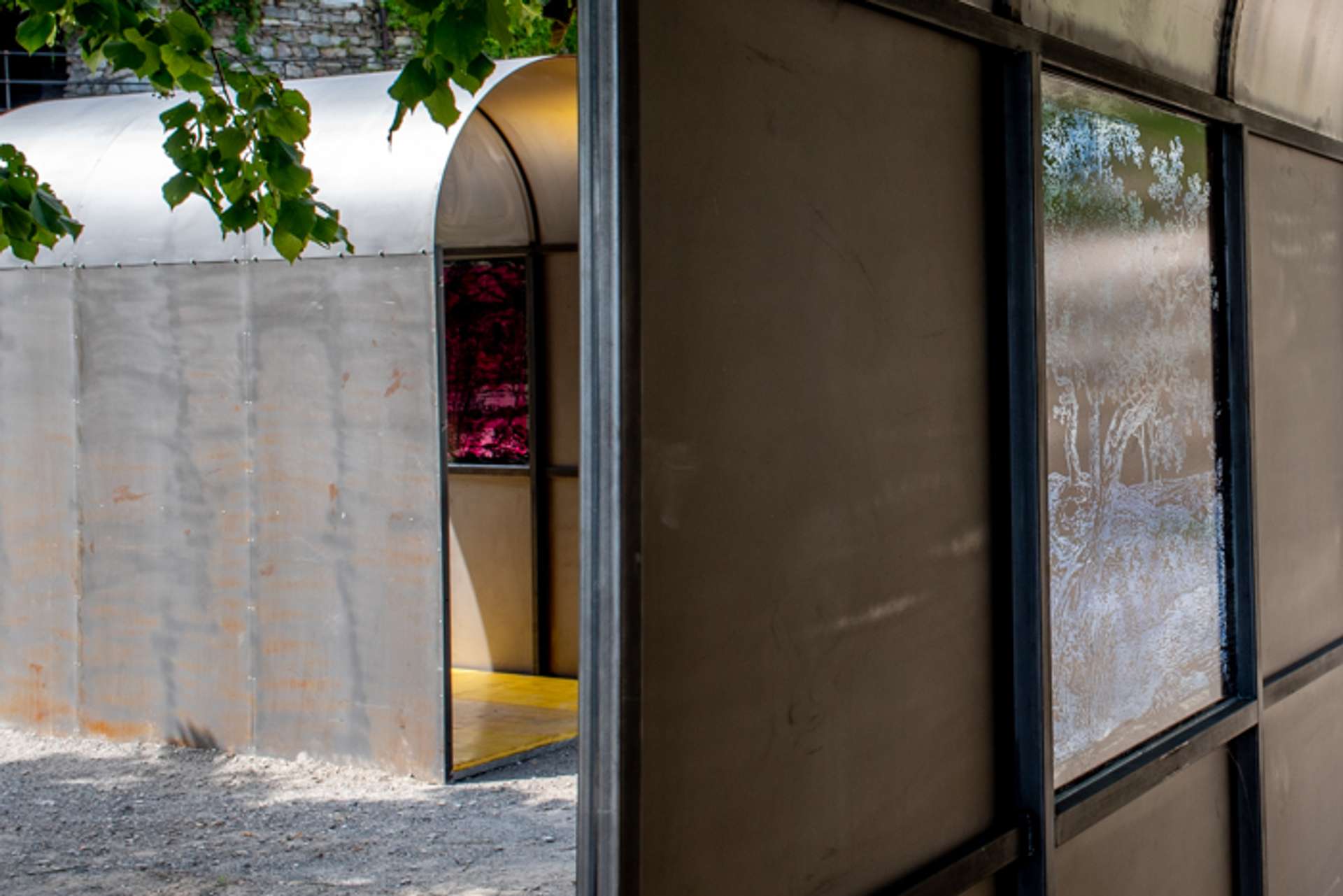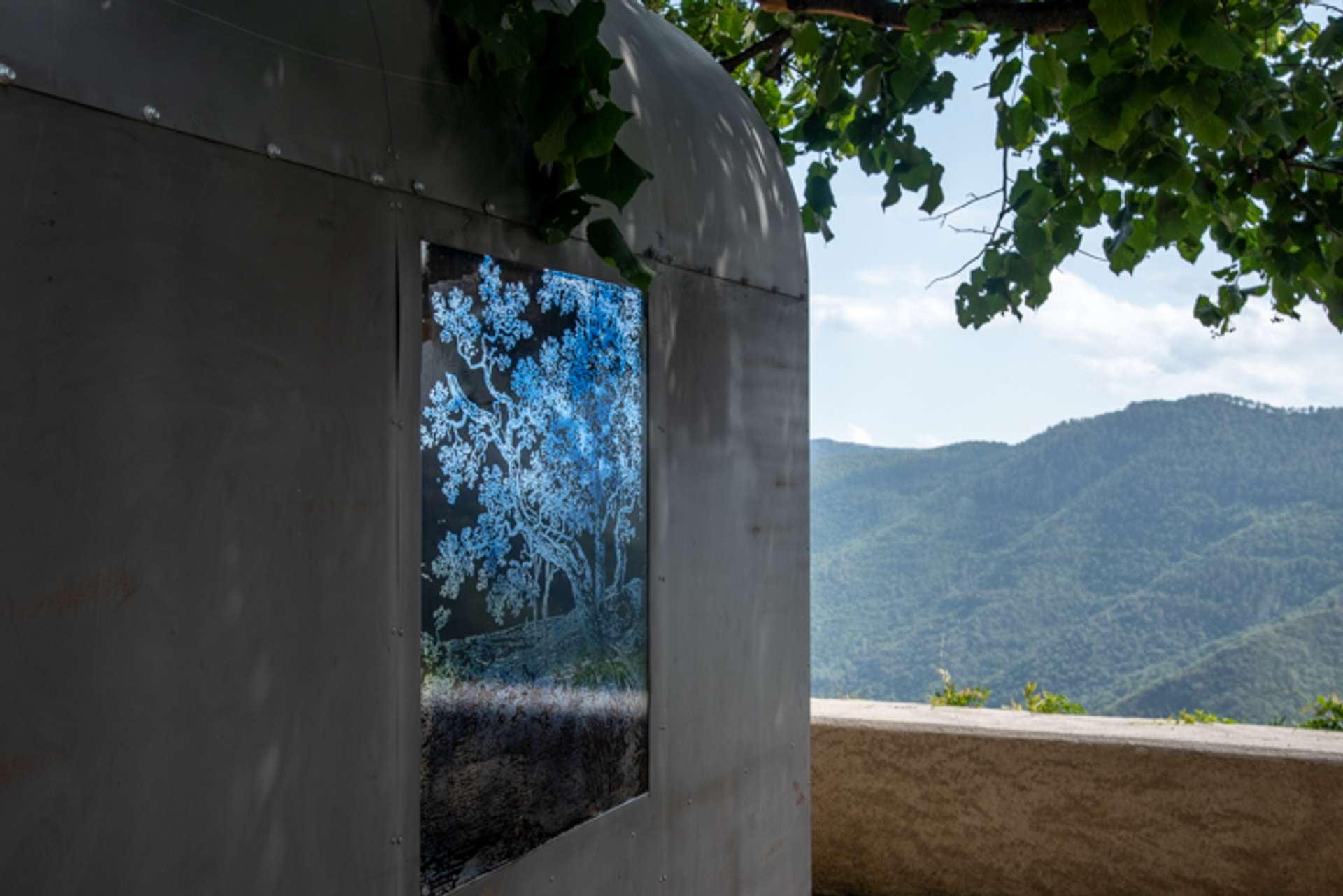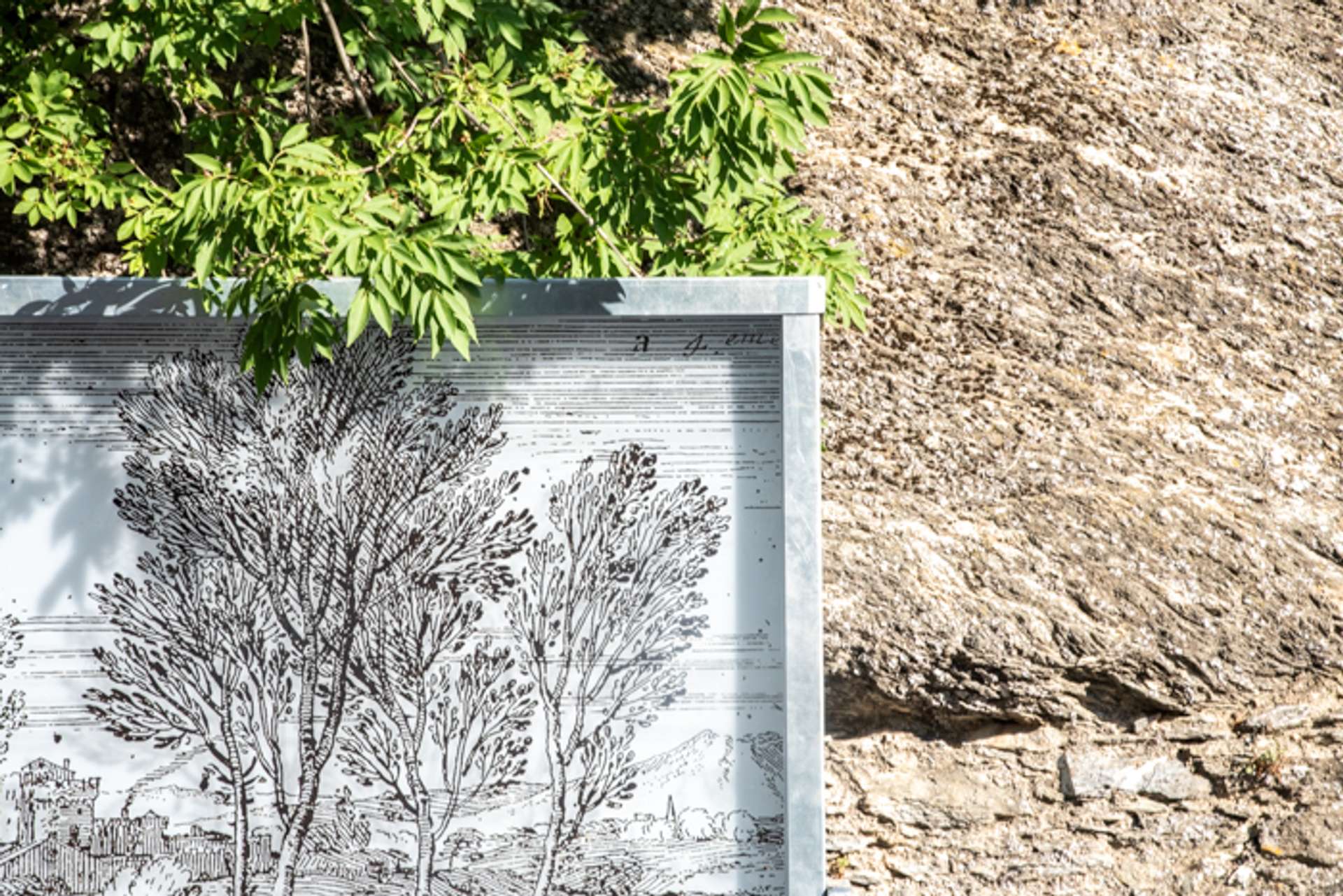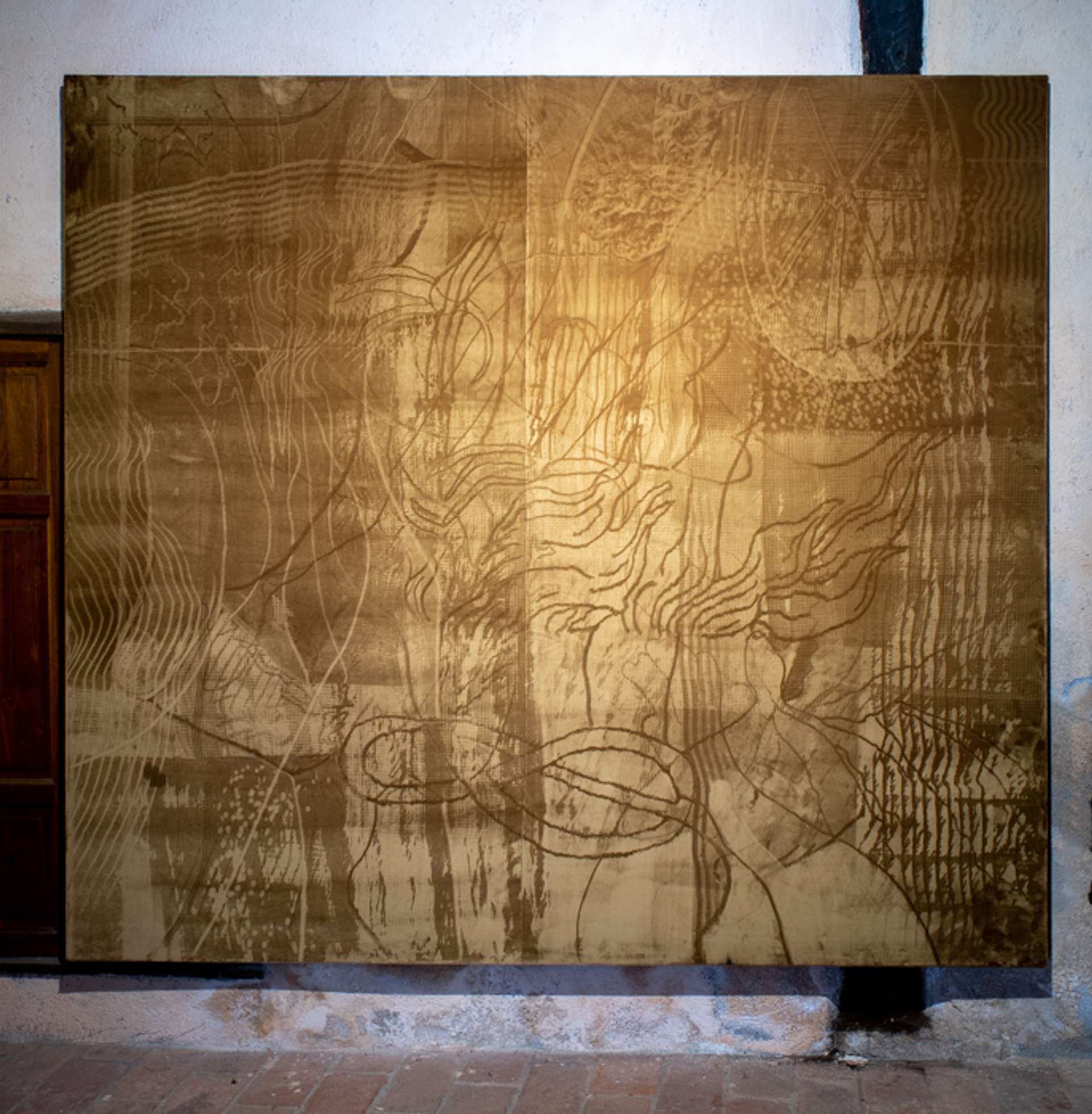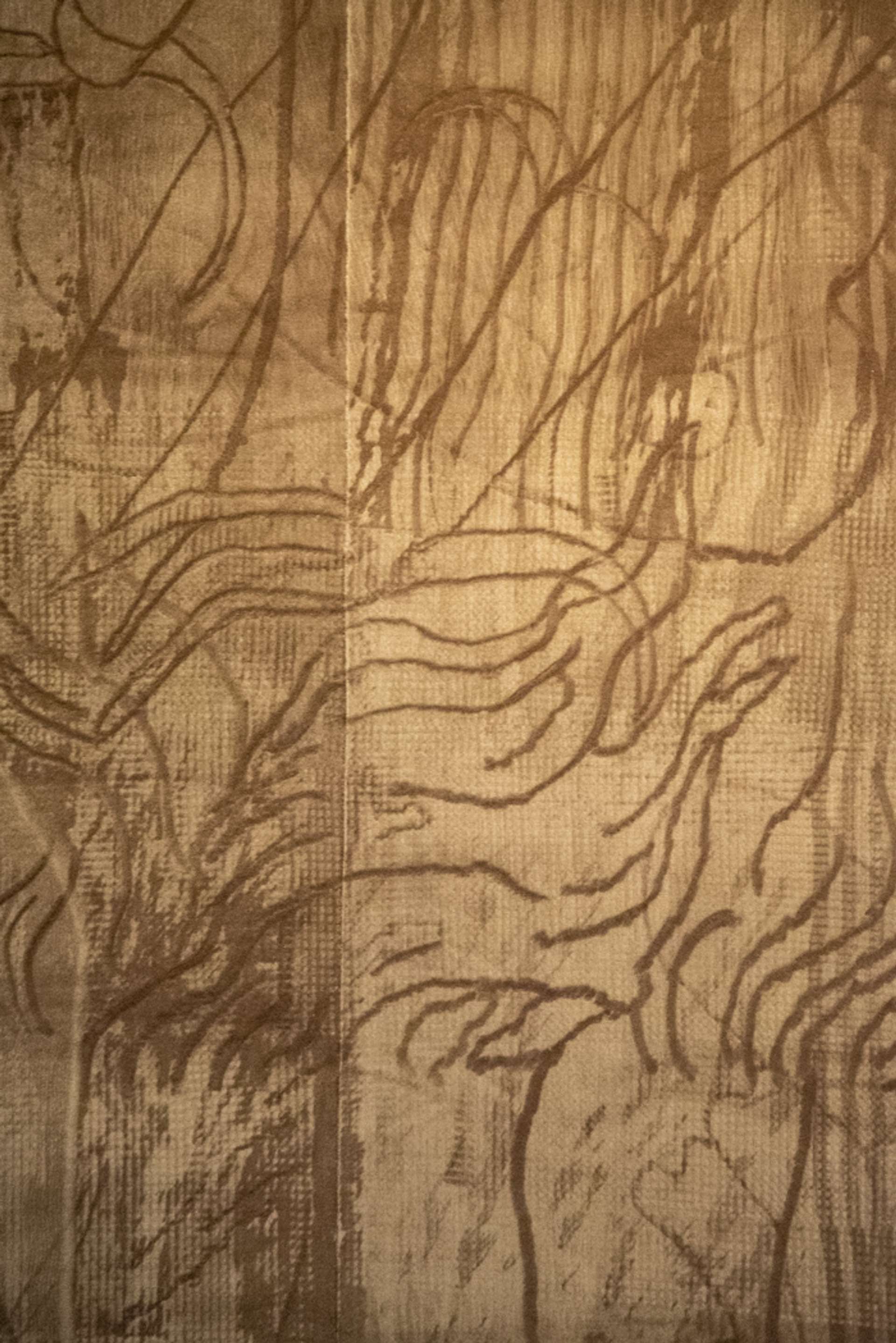Externally unchanging microcosms, ordered by archaic balances between land, people and animals: this is how villages, forests and the countryside appeared before the arrival of frenzied modernity. But what remains today, we ask ourselves as we walk through the “caruggi” (alleyways), of that civilisation?
In the wild cradle of the Apennines, Leonardo Meoni’s widespread intervention – which translates elements and forms typical of Castelvecchio into an artwork, the narrow passages opening onto the squares, the coloured stained-glass windows, the work of the farmers – intends to bring a light, as Montale would say, to rediscover what has vanished over time.
Se si resta sul posto, a title that recalls the sophistication of Ettore Sottsass, is an invitation to pause in order to relate to silence: a presence that dominates every nook and cranny and an indispensable guide on the voyage towards this rediscovery; deciphering the story, however, requires total contact with the location, not just a mere transit. The works, which draw nutrition from the culture of the territory in order to induce it to blossom anew, thus take on the appearance of compulsory stops that compel the gaze, disturb the pace, ask for silence as if they were a secular Via Crucis. All this in a free circular path, not unlike the layout of the city walls. In the upper square Una luce temporanea (A temporary light) is installed: a narrative “window” presenting a pastoral scene, switched off during the day, illuminated at night. In the lower square we find Passaggio (Passage): two walkable galleries that invite us to observe the exterior through hand-painted glass windows and direct the view to the village and the open, silent valley. In the “Negozietto” – a small disused shop – we finally meet Radicale (Radical), an iridescent velvet that muffles and absorbs the atmosphere, and carries motifs made with peasant tools that evoke stories of work in the fields, of the land, of a return to the origins. This is an encounter that serves as a reminder that sometimes the protagonist of a village is neither the architecture nor the community, but rather the silence and everything that it surrounds and preserves.
ㅤ
Opere esposte:
01. Leonardo Meoni, Una luce temporanea, 2023. Iron, backlit painted glass 250 x 270 x 300 cm.
Piazza Torre
ㅤ
02. Leonardo Meoni, Passaggio, 2023. Iron, wood, painted glass, 270 x 150 x 600 cm.
Piazza Cavour o Piazza delle Erbe
ㅤ
03. Leonardo Meoni, Radicale, 2023. Mixed technique on velvet, 200 x 250 cm.
"Il Negozietto”, Via Roma.
YOU HAVE TO STAY THERE, SIT DOWN, REPEATEDLY WALK THROUGH THE NARROW PASSAGES, UNDERSTAND THAT FIRST OF ALL THERE ARE THE PLACES, THEN THOSE WHO LIVE THERE, UNDERSTAND THAT THE SPACE IN WHICH WE FIND OURSELVES WAS MADE BY EMPTYING THE STREETS AND HOUSES OF UNNECESSARY NOISE
Leonardo Meoni (Florence, 1994) lives and works in Florence and New York. He studied at the Art Institute in Siena, the Academy of Fine Arts in Florence and the Brera Academy of Fine Arts. He has exhibited in several solo and group shows in Italy and abroad, including: Place Holder, Amanita, New York (USA, 2022); Ars Memoriae, Palazzo Branciforte, Palermo (IT, 2022); Break-in. Temporal displacement, The Address gallery, Brescia (IT, 2022); Cancellare Senza Permesso, Spazio Amanita, Florence (IT, 2021); Outside of Inside of Outside, Safavi House, Isfahan (IR, 2021); and Sentences, Museo Novecento, Florence (IT, 2018).
IS A WIDESPREAD INTERVENTION THAT INVESTIGATES THE RELATIONSHIP BETWEEN CASTELVECCHIO DI ROCCA BARBENA IN LIGURIA AND SILENCE, INCORPORATING RECURRING ELEMENTS AND FORMS FOUND IN THE VILLAGE INTO HIS WORK
Castelvecchio di Rocca Barbena, with just 140 inhabitants, is one of the ‘Borghi più Belli d’Italia’ (Most Beautiful Villages in Italy). Dating back to the Middle Ages and with its fairytale-like name, the small settlement resembles a stone flower blossoming in the upper Val Neva valley, comprising an imposing castle and the cluster of houses that were progressively constructed at its foot. Built in the 12th century, the castle served an important strategic function and it was severely damaged in 1672 in the clash between Genoa and the Savoys, in which mercenary Sebastiano Contrario took part. His name gave rise to the expression “essere un Bastian Contrario”, meaning always being opposed to general opinion. The village is characteristic for its old stone houses with tuff portals, featuring Alpine-Provençal motifs on the window frames, ovens, terraced roofs and arched roof floors where chestnuts, figs, apples and mushrooms were dried. Castelvecchio is a popular destination for its architecture, its proximity to the sea and its paths set in a unique landscape. These include the Sentiero della Poesia (Poetry Trail), the ancient Via del Roso (Roso Trail) or the Sentiero di Ilaria (Ilaria Trail), as well as the Poggio Grande and Rocca Barbena nature area, with the Alta Via dei monti liguri (high-altitude track of the Ligurian mountains) and the Arma Veirana cave where Palaeolithic burials have been found. The local cuisine is unmissable, with borage raviolini, rabbit allo steccadò (a herb similar to lavender) and apple fritters. The collection of Albissola ceramics at Ca' del Borgo is worth a visit and, in summer, the FestivAlContrario organises concerts, shows and walks to promote the Val Neva villages.
